Getting to know the sacred museum of Caracas./ Conociendo el museo sacro de Caracas.
🏺⌛️🗡🕯⚰️🖼📜 🏺⌛️🗡🕯⚰️🖼📜 🏺⌛️🗡🕯⚰️🖼📜

Sacred Museum of Caracas
Hello everyone! Today I want to share with you my experience at the Sacred Museum of Caracas. This time I wanted to try something different and write this post as a reportage style. For those visitors to museums and historical places, here is a small sample of what remains of some memories of a very distant yesterday in my country Venezuela.
It is located in what was formerly the cemetery of the cathedral of Caracas in the seventeenth century and the crypts of the first bishops of Caracas and the common grave are still preserved; an ossuary in which the bones of the deceased were placed to manage the space. These spaces were also used as a prison for ecclesiastics in the early eighteenth century.
The main point of reference to get to is the Plaza Bolívar de Capitolio, very colorful at this time of year, and with many squirrels running in the treetops. There you will find the Caracas Cathedral and the museum on the south side of this cathedral.
The days for public visits are from Tuesday to Sunday, paying a small fee that includes the visit to the Archbishop's House, also located a few steps away in the surroundings of the Plaza Bolívar.
I understand that tours usually include a guided tour, but unfortunately there was no staff to take it while I was at the museum.
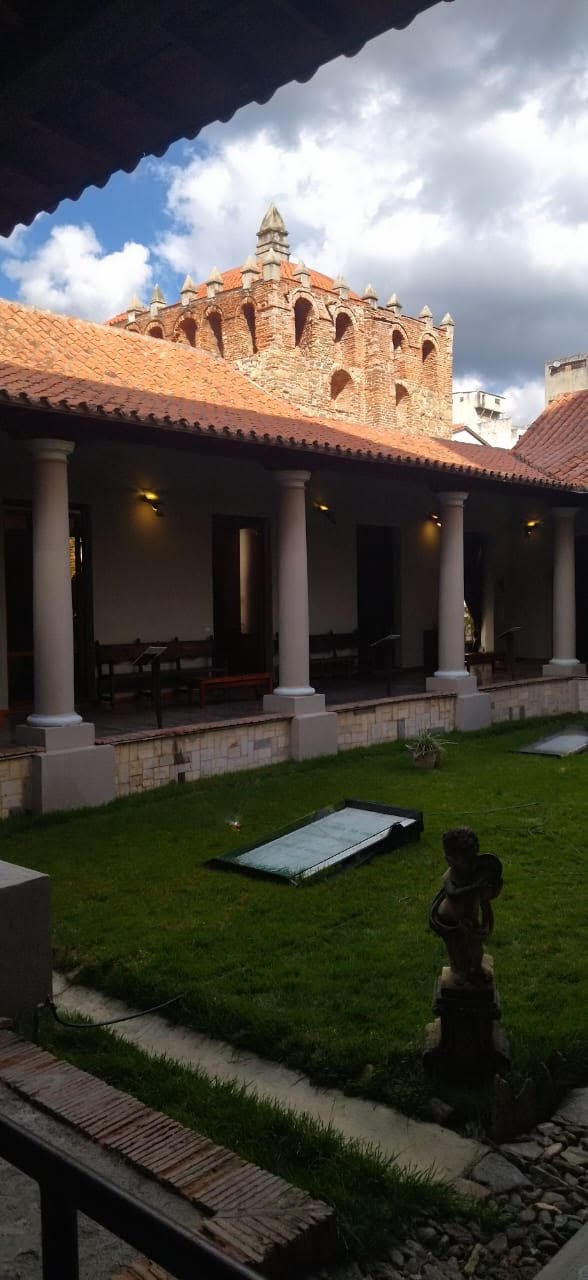
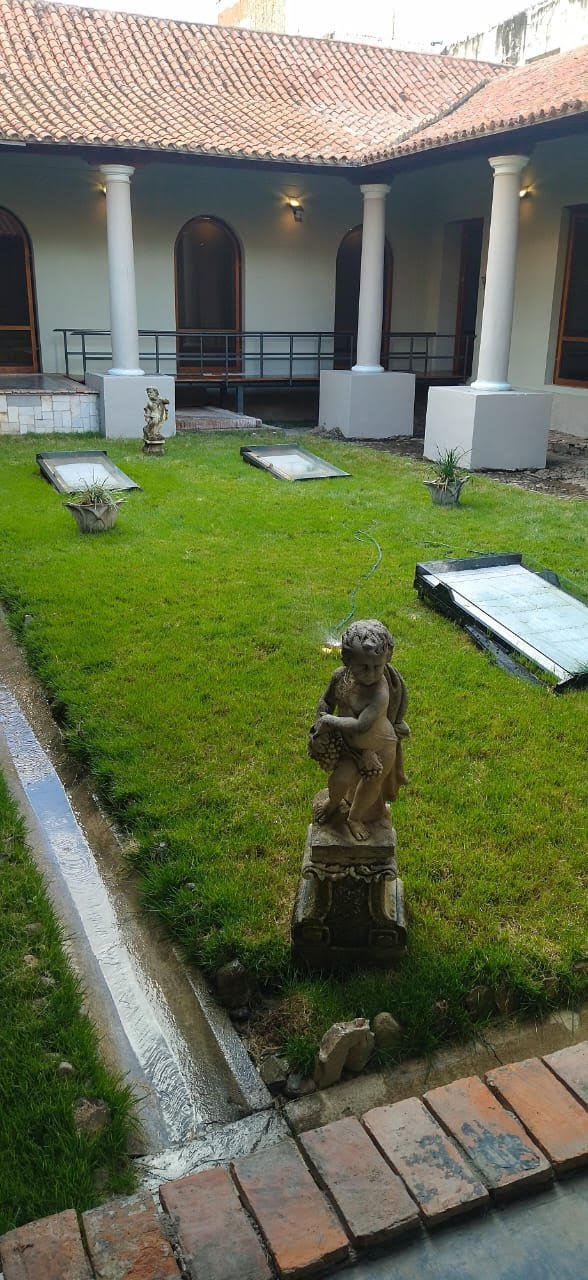
Upon entering, the first thing you may notice is a couple of display cases with souvenir items for sale to the public. As you pass the central area of the building, you can see that it is a very large place with a rectangular shape. In the center, a grassy courtyard has a couple of stone angels. At first glance it might seem like a simple courtyard, but next to the angels are the tombstones of the people who have remained in the place many decades before the place existed as the museum that stands today.
Currently in the right area of the building there is an exhibition of religious paintings, from images of saints, to biblical events such as Salome asking for the head of John the Baptist.
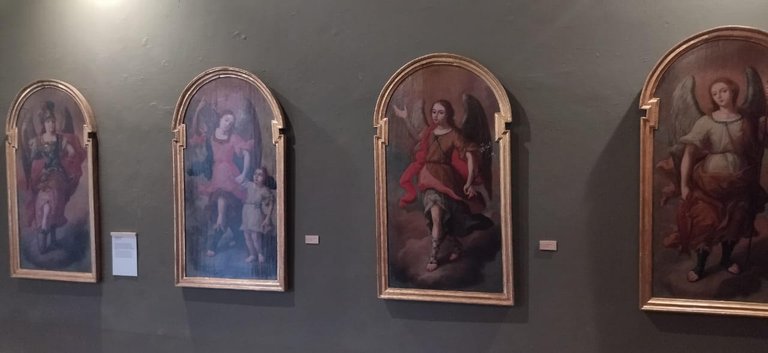
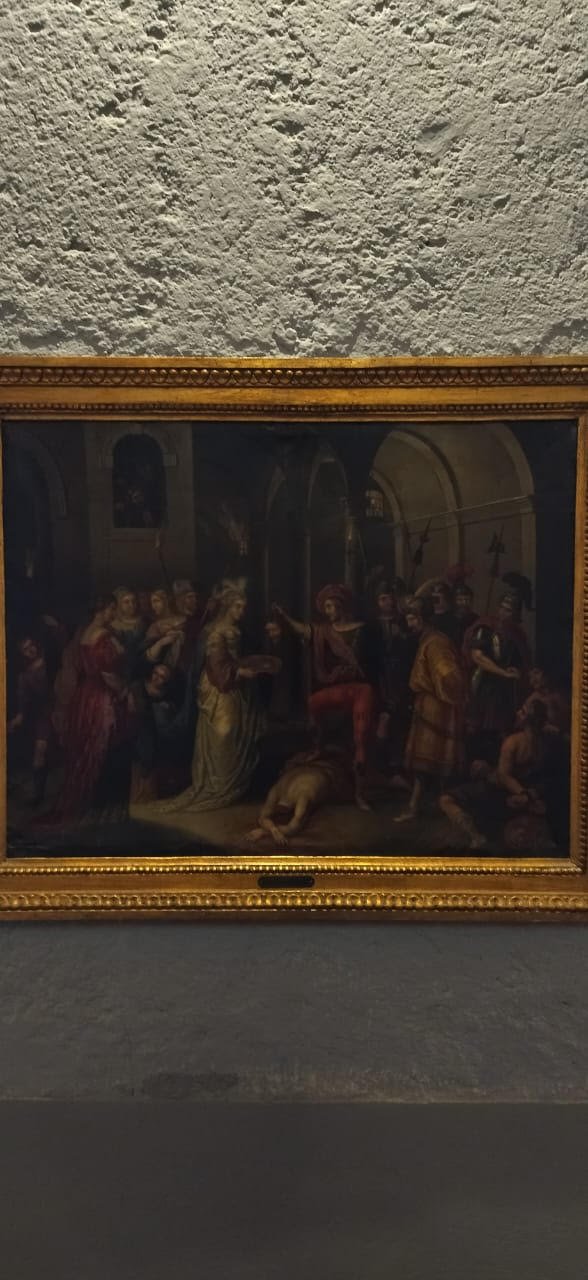
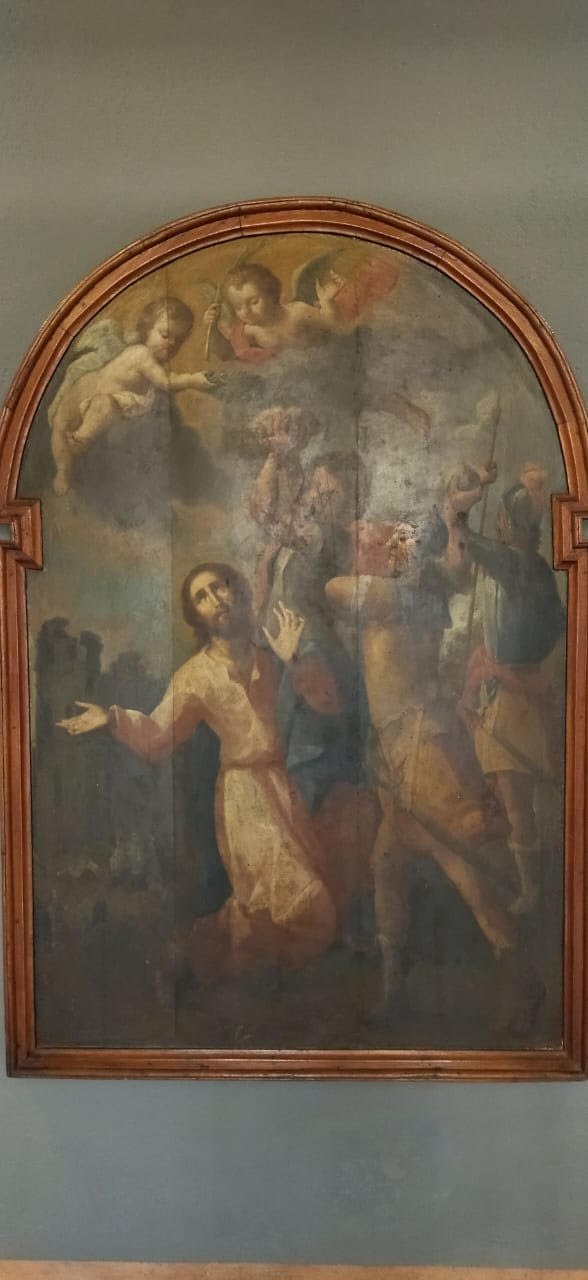
Paintings that, as is common in Christian images, reflect painful and gloomy moments. I must say that from the moment I entered the museum I could perceive a heavy atmosphere, perhaps partly because of the silence that was maintained in the place, even when there are some employees wandering the corridors, possibly out of respect for what the building represents and the deceased who still rest in it, but the silence made the atmosphere a little chilling.

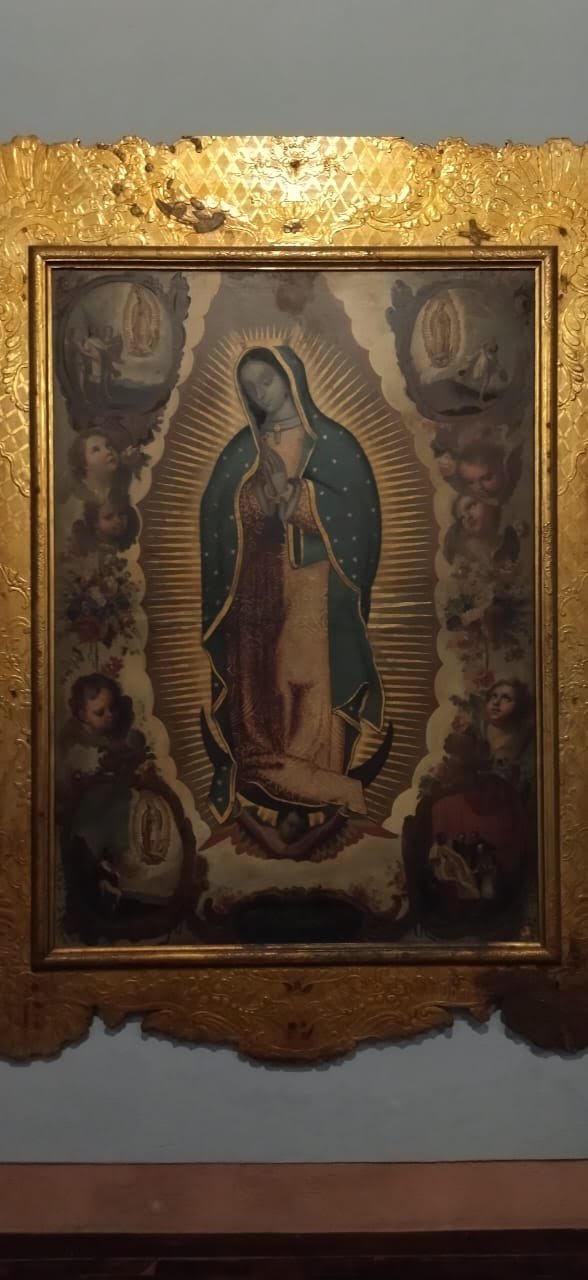
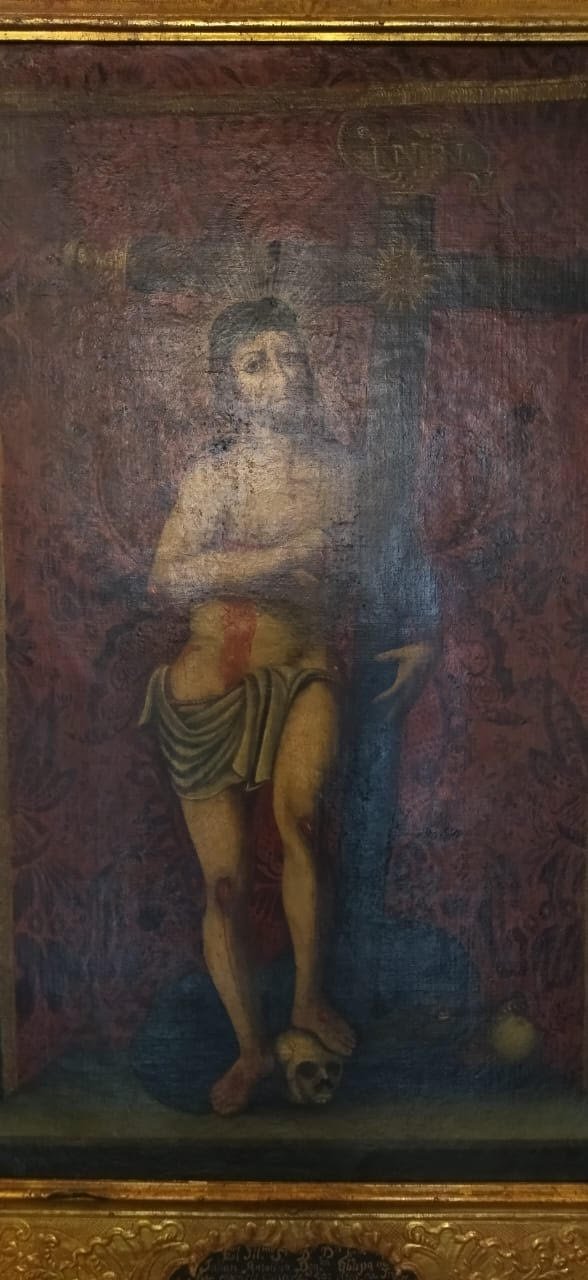
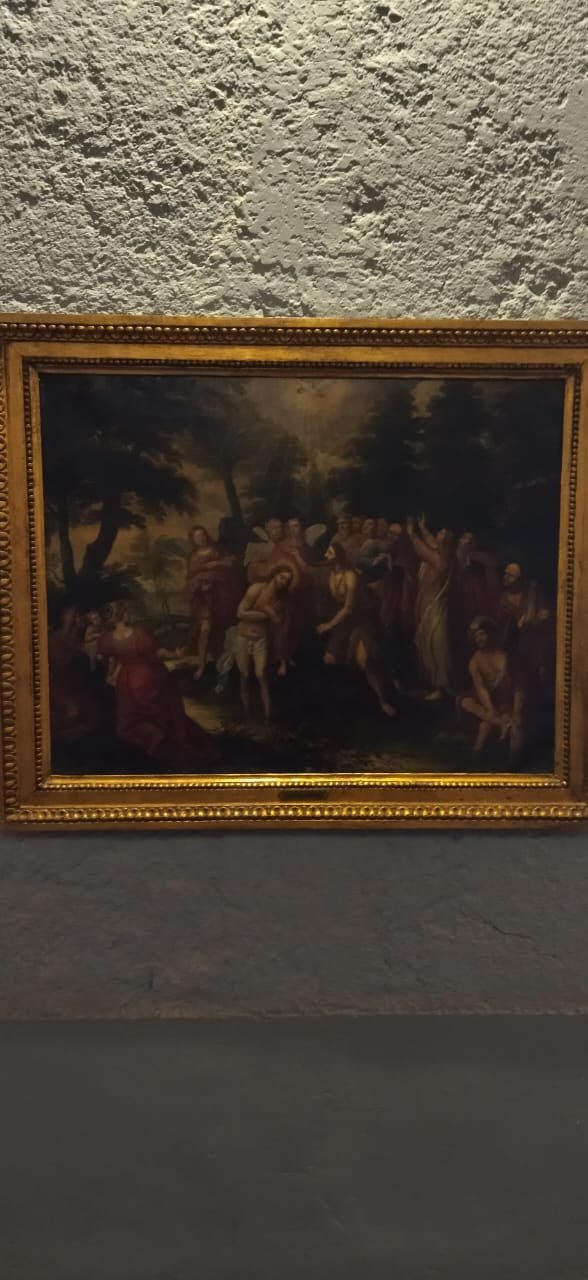
We left this area to the front aisle, before entering a figure dressed in ecclesiastical garb was already striking.


As I entered the room, I couldn't help but be startled when I saw a woman dressed completely in white and it took me a moment to notice that it was the area where the clothes with which the figures of saints were dressed at the time are exhibited.
Of the accessories that caught my attention the most, were those that belonged to St. Peter that included a crown and a set of keys, since it is known that St. Peter is the one who opens the doors to those who depart from this world and are received into heaven.
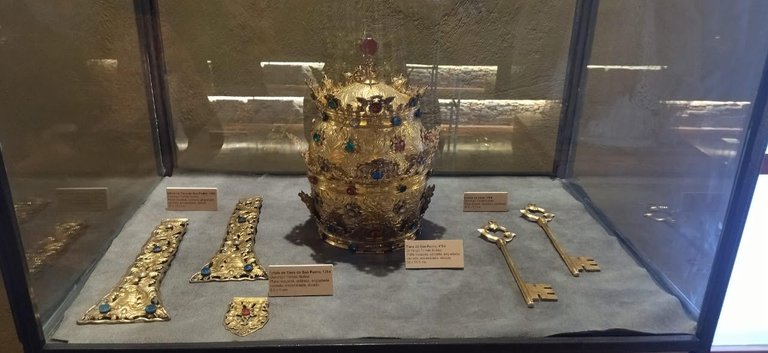
In the next side area (to the far left of the main entrance), there are more figures of saints, including the archangel Michael. There is a small access to a narrow unroofed area, on one of the walls you could see the tombstone of who was one of the bishops of Caracas in life and a marble tombstone in homage to the parents and wife of the liberator Simón Bolívar, under the presidency of Juan Vicente Gómez in 1911.
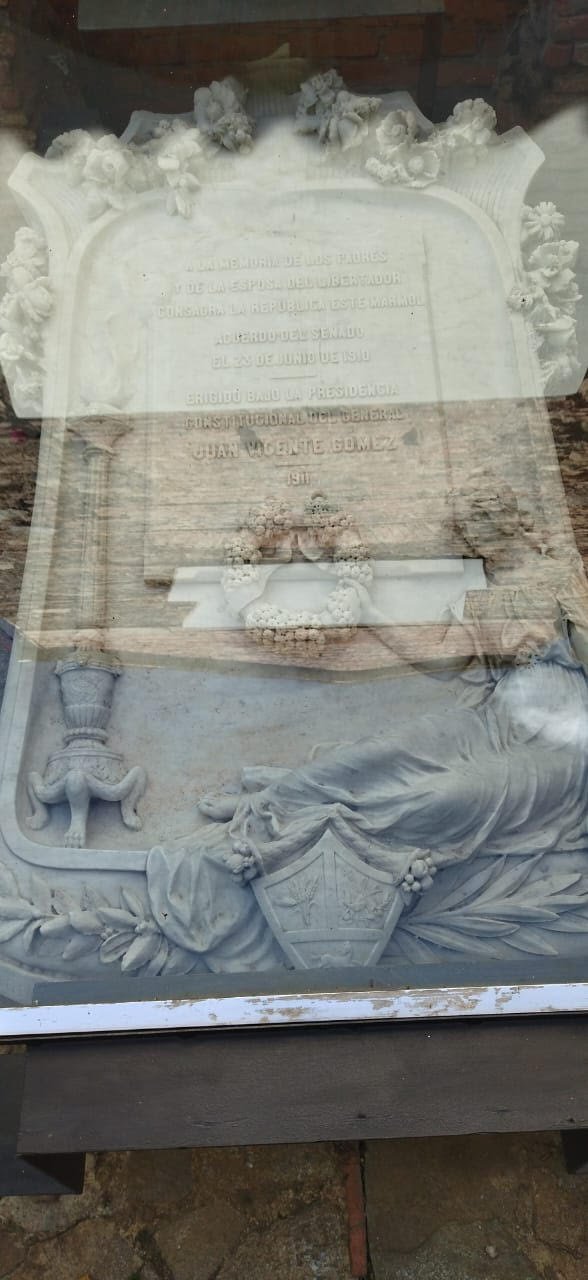
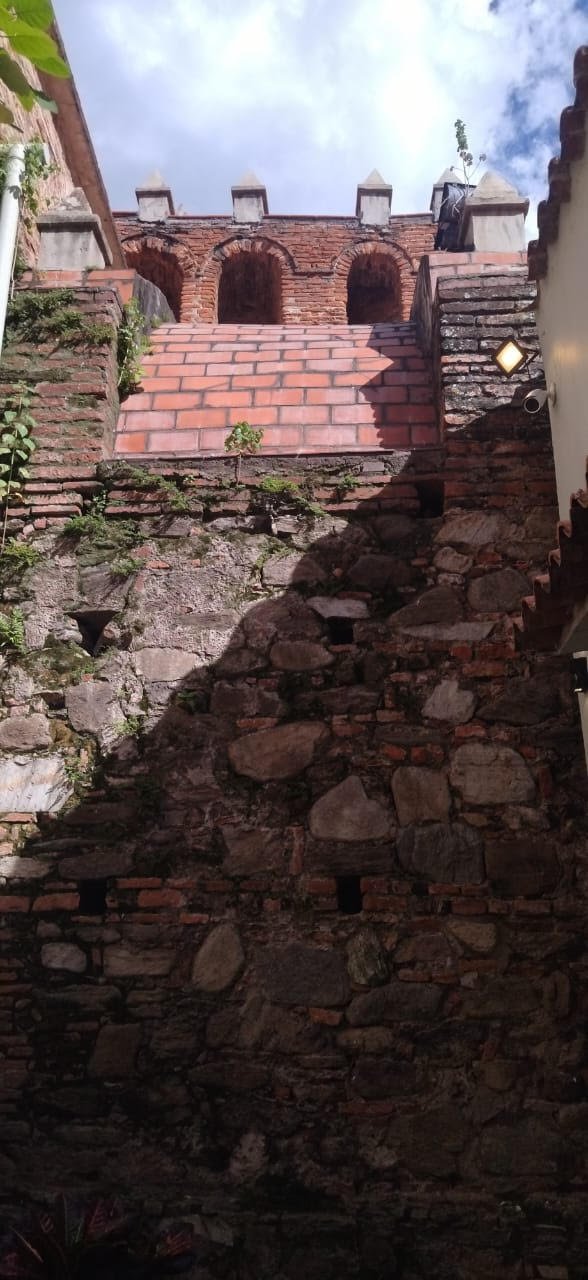
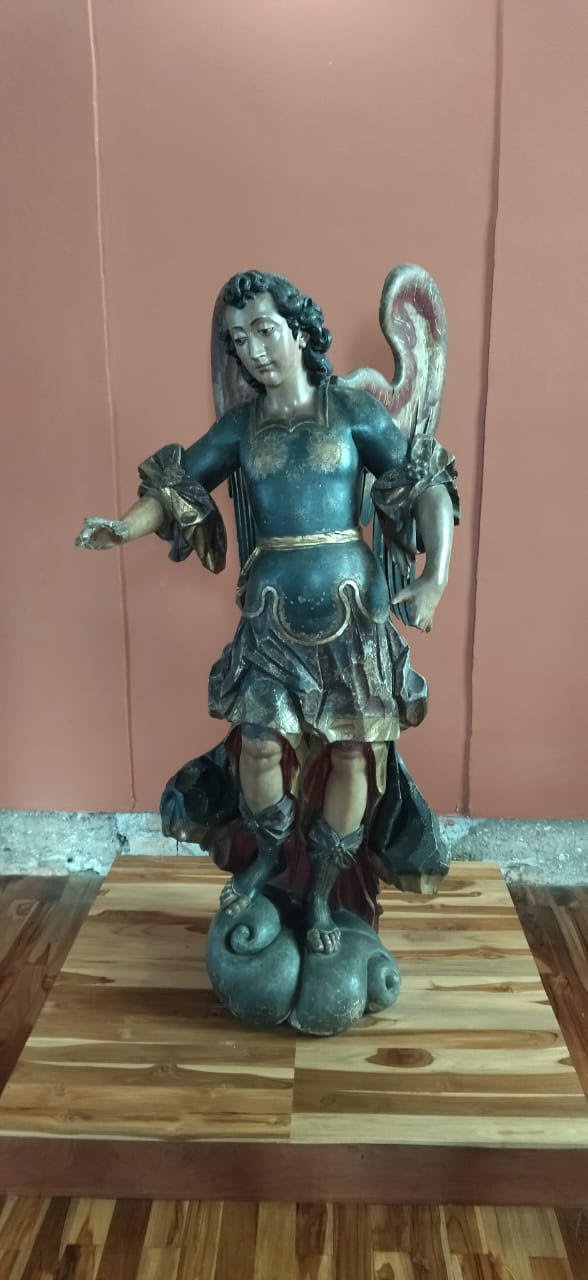
All that remained was to visit the most awaited area of the museum, the crypt. But first you had to go through the hall where the elements related to the choirs of the cathedral were, such as the lecterns and large and perfectly preserved wooden seats.
Unfortunately at the time of my tour, the book of Gregorian chants was not on display in the room. I found out about this book because of information I consulted on the internet, but I couldn't see it in person.
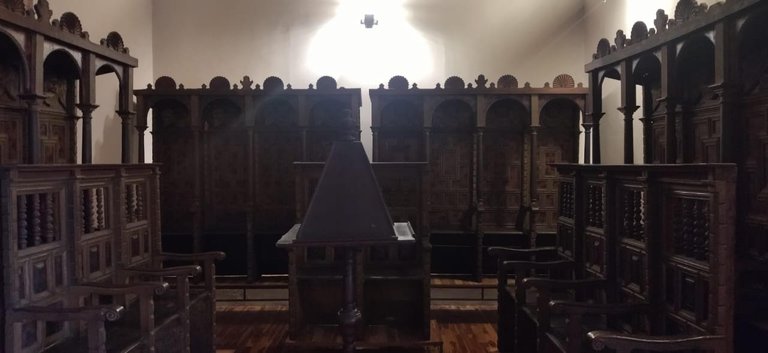


In the center of the front wall is the small entrance to the crypt. Without a tour guide, the doubt appeared if I could enter with total freedom, after thinking about it a little I decided to enter. The door is low and you have to bend down as you pass, you could hear voices, knocks. As I looked to the side, I saw the image of a man walking in rags, moving along the wall, the museum had placed a projector that had these images playing and the ceiling was low enough for my soul to return to my body after that fright. I had already mentioned that the space also functioned as an ecclesiastical prison, where seminarians who committed offenses were kept.
Going a little deeper, we find the mass grave, the ossuary. In front of the surveillance of a Christ, and currently covered with glass, is the deep rectangular space where the deceased have rested, since the seventeenth century. If I was hesitant to take photos before, here I didn't dare to do it lightly, partly fearful and partly out of respect. A glance at the bottom of the pit was enough to notice some bones still preserved and exposed on the excavated earth.
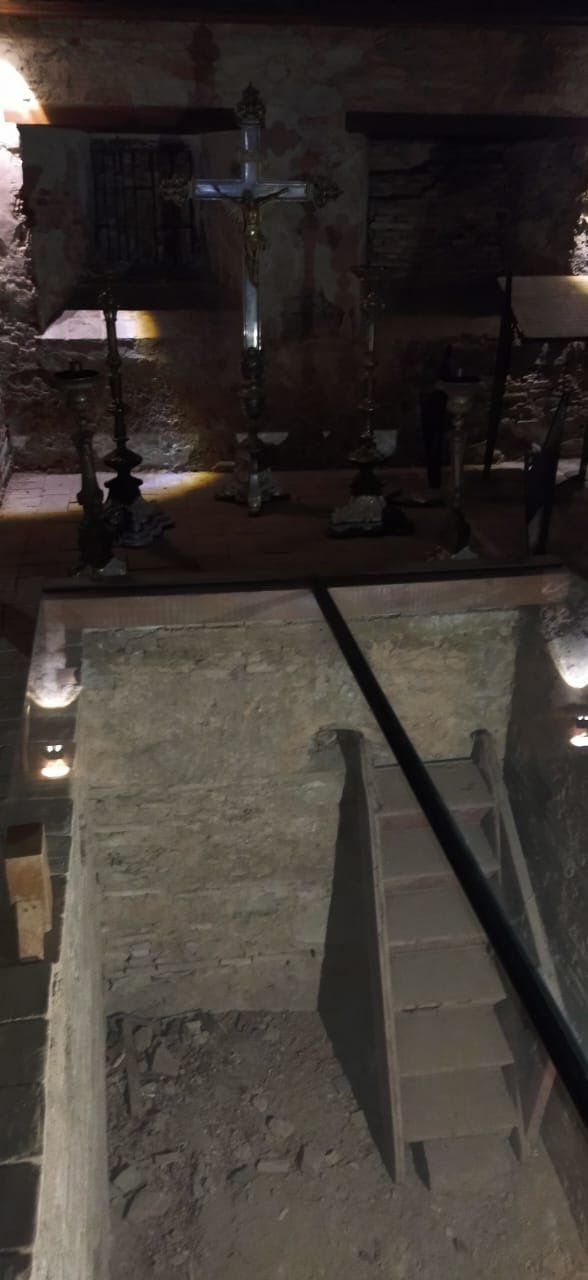
This was the end of my tour and it wasn't until hours later that I remembered that those walls hold paranormal stories, which could easily be confirmed by the employees themselves. If, looking at the photos, you notice any figures that could be mistaken for part of the museum exhibit, you may need to look again to be sure.

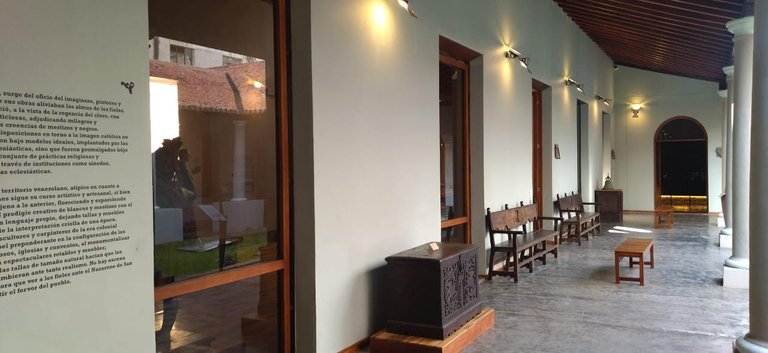


Well, my dear readers. Despite not having a tour guide I saw the place too serious to be doing my typical monkey tricks in the photos, so I decided to limit myself and take the reportage style photos, as I had mentioned at the beginning. I hope you enjoyed learning a little about the culture and buried past of my country. Greetings to all and thank you to those who take the trouble to stop by. Thank you thousands.
🏺⌛️🗡🕯⚰️🖼📜 🏺⌛️🗡🕯⚰️🖼📜 🏺⌛️🗡🕯⚰️🖼📜
ESPANOL

Museo Sacro de Caracas
¡Hola a todos! Hoy quiero compartirles mi experiencia en el Museo Sacro de Caracas. Esta vez quería probar algo distinto y escribir este post como estilo reportaje. Para aquellos visitantes de museos y lugares históricos, aquí les traigo una pequeña muestra de lo que quedan de algunos recuerdos de un ayer muy lejano de mi país Venezuela.
Está ubicado en lo que antiguamente era el cementerio de la catedral de Caracas en el siglo XVII y aún se conservan las criptas de los primeros obispos de Caracas y la fosa común; un osario en el cual colocaban los huesos de los fallecidos para administrar el espacio. Estos espacios también fueron usados como cárcel de eclesiásticos a principios del siglo XVIII.
El principal punto de referencia para llegar es la plaza Bolívar de Capitolio, muy colorida en estas fechas navideñas, y con muchas ardillas corriendo en las copas de los árboles. Allí se encuentra la catedral de Caracas y el museo en el costado sur de esta catedral.
Los días para visitas del público es de martes a Domingo, pagando una pequeña tarifa que incluye la visita a la casa Arzobispal, ubicada también a unos pocos pasos en los alrededores de la plaza Bolívar.
Tengo entendido que las visitas suelen incluir un recorrido guiado, pero lamentablemente no había personal que la realizara mientras estuve en el museo.


Al entrar lo primero que se puede notar es un par de vitrinas con artículos de recuerdo para la venta al público. Al pasar el área central del edificio se puede apreciar que es un lugar muy amplio con forma rectangular. En el centro, un patio cubierto de césped, que tiene un par de angelitos de piedra. A simple vista podría parecer un simple patio, pero junto a los ángeles se encuentran las lápidas de las personas que han permanecido en el lugar muchas décadas antes de que existiera el lugar como el museo que se mantiene hoy en día.
Actualmente en el área derecha del edificio se encuentra una exposición de pinturas religiosas, desde imágenes de santos, hasta de hechos bíblicos cómo Salomé pidiendo la cabeza de Juan el Bautista.



Cuadros que, como es común en las imágenes cristianas, reflejan momentos dolorosos y lúgubres. Debo decir que desde que ingresé al museo se podía percibir un ambiente pesado, quizá en parte por el silencio que se mantenía en el sitio, aun cuando hay algunos empleados deambulando los pasillos, posiblemente por respeto a lo que representa el edificio y los difuntos que aún descansan en él, pero el silencio hacía el ambiente un poco escalofriante.




Salimos de esta área al pasillo frontal, antes de ingresar ya llamaba la atención una figura vestida con atuendos eclesiásticos.


Al entrar al salón, no pude evitar un sobresalto al ver una mujer vestida completamente de blanco y tardar un instante en notar que se trataba del área donde se exhiben las ropas con que vestían a las figuras de santos en la época.
De los accesorios que más llamaron mi atención, estaban los que pertenecían a San Pedro que incluían una corona y un juego de llaves, pues se sabe que San Pedro es quién abre las puertas a los que parten de este mundo y son recibidos en el cielo.

En la siguiente área lateral (al extremo izquierdo de la entrada principal), se encuentran más figuras de santos, entre ellas el arcángel Miguel. Hay un pequeño acceso a un área estrecha sin techar, en una de las paredes se podía observar la lápida de quien fuera en vida uno de los obispos de Caracas y una lápida de mármol en homenaje a los padres y la esposa del libertador Simón Bolívar, bajo la presidencia de Juan Vicente Gómez en el año 1911.



Ya solo restaba visitar el área más esperada del museo, la cripta. Pero antes había que pasar por el salón dónde estaban los elementos relacionados a los coros de la catedral, como los atriles y asientos de madera amplios y perfectamente conservados.
Lamentablemente al momento de mi recorrido, el libro de cantos Gregorianos no estaba expuesto en la sala. Este libro lo conocí por información que consulté en internet, pero no pude verlo en persona.



En el centro de la pared frontal se encuentra la pequeña entrada a la cripta. Sin un guía del recorrido, apareció la duda si podía ingresar con total libertad, luego de pensarlo un poco me decidí a entrar. La puerta es baja y hay que agacharse al pasar, se escuchaban voces, golpes. Al mirar a un costado, vi la imagen de un hombre andando en harapos, que se movía a lo largo de la pared, el museo había colocado un proyector que tenía estas imágenes reproduciéndose y el techo era lo suficientemente bajo para que mi alma me volviera al cuerpo luego de ese susto. Ya había mencionado que el espacio también funcionó como cárcel eclesiástica, allí permanecían los seminaristas que incurran en faltas.
Adentrándonos un poco más, hallamos la fosa común, el osario. Ante la vigilancia de un cristo, y actualmente cubierto con vidrio, se encuentra el profundo espacio rectangular donde han reposado los difuntos, desde el siglo XVII. Si antes tenía dudas de tomar fotos, aquí no me atrevía hacerlo a la ligera, en parte temeroso y en parte por respeto. Una mirada al fondo de la fosa era suficiente para notar algunos huesos aún conservados y puestos al descubierto sobre la tierra excavada.

Aquí finalizó mi recorrido y no fue sino hasta horas más tarde que recordé que esas paredes guardan historias paranormales, que fácilmente podrían ser confirmadas por los mismos empleados. Si al observar las fotos notan alguna figura que pueda confundirse como parte de la exposición del museo, quizá deban observar de nuevo para estar seguros.




Bueno, mis queridos lectores. A pesar de no tener guía turístico vi el lugar muy serio para estar haciendo mis típicas monerías en las fotos, así que decidí limitarme y tomar las fotos estilo reportaje, como les había mencionado en el principio. Espero les haya gustado conocer un poco de la cultura y el pasado enterrado de mi país. Un saludo a todos y gracias a quienes se toman la molestia de pasarse por aquí. Gracias miles.
Thanks for joining the Wednesday Walk :)
Congratulations @maisugar! You have completed the following achievement on the Hive blockchain And have been rewarded with New badge(s)
Your next target is to reach 500 comments.
You can view your badges on your board and compare yourself to others in the Ranking
If you no longer want to receive notifications, reply to this comment with the word
STOPCheck out our last posts: